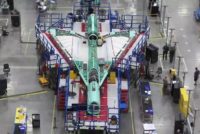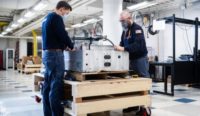HUNTINGTON BEACH, CA—Karman Space & Defense will manufacture a variety of subsystems for the X-59, a new supersonic aircraft being developed by Lockheed Martin and NASA.
The X-59 is NASA’s first step in achieving quiet supersonic flight. The aircraft is expected to fly at 1.4 times the speed of sound, or 925 mph, and its design, shape, and technologies will allow it to generate a quieter sonic thump. Karman’s contributions to the X-59 project include control surfaces, T-tails, bulkheads, forebody keels, frames, canopy fairings, spars, skins and stiffeners.
NASA and Lockheed Martin are working together to develop the X-59 as part of the agency's Low-Boom Flight Demonstrator program. The goal of the program is to collect data that could potentially lead to the loosening of current regulations that prohibit commercial supersonic flight over land. NASA plans to fly the X-59 over select U.S. cities in 2026 and gather public feedback on the aircraft’s noise profile. This data will be used to help establish an acceptable commercial supersonic noise standard and to ultimately lift the ban on commercial supersonic flight over land.
"The X-59 is designed to generate a sound about as loud as a car door closing, as opposed to a sonic boom. NASA’s goal is to provide regulators with the data needed to establish new rules that would allow supersonic commercial travel over land,” says Peter Iosifidis, NASA’s Low-Boom Flight Demonstrator program manager.
Karman Space & Defense specializes in providing concept-to-production systems for space and defense missions. The company is also involved in the development of other critical subsystems for supersonic aircraft, including the F-35 and F-22.
The X-59 is currently in the final stages of production and is expected to begin flight testing later this year.








